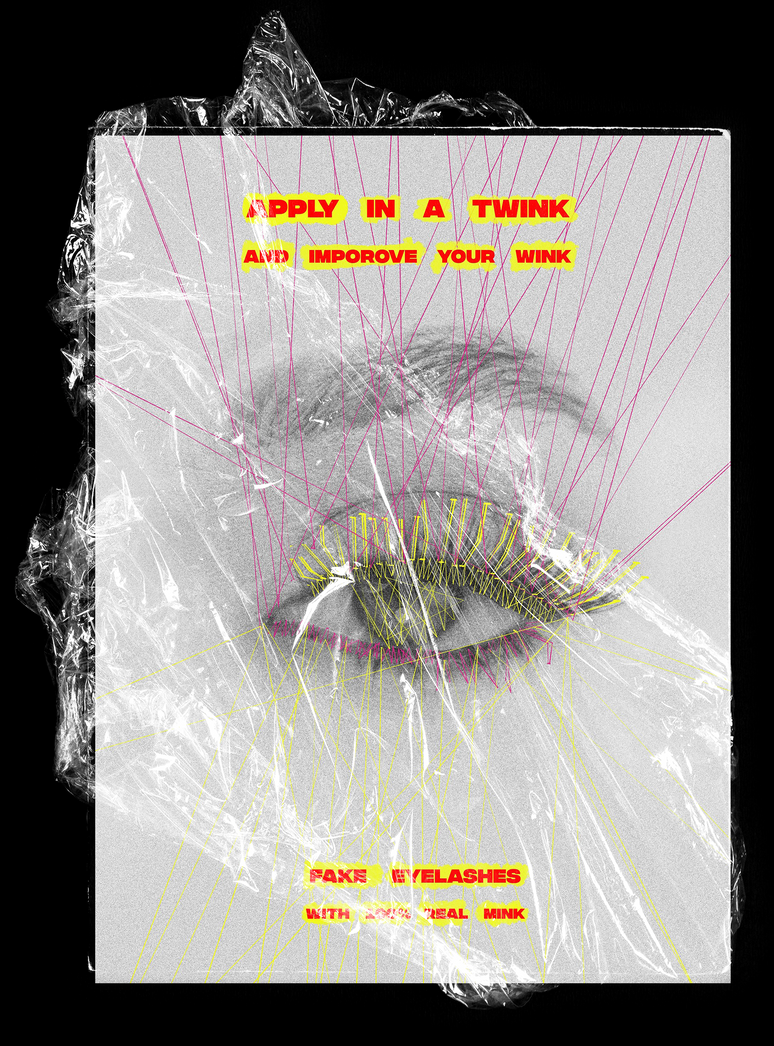Image
100% Real Mink
/Ongoing project./ 2021
100% Real Mink, is part of a larger body of ongoing work by titled Daily Diet. It is an attempt to criticize the power of money and point fingers at the capitalist, consumerist culture of the world.
In this edition, the focus is on Mink Farming and the trade of Mink products. During the COVID-19 pandemic, mink turned out to be very susceptible to human–mink infection, sparking fears of widespread outbreaks and mutations in the mink farm populations of many countries. In November 2020, Denmark decided to cull all its mink - up to 17 million lives - because of the chance of spreading coronavirus to other humans. While the rest of mink farms in the world containing about 40 million minks, prepare to follow suit, these images are created as a reaction to the horror of mink farming and its relation to humans.
Photograph of Mink fur extracted from online advertisement. Sellers boast about the quality by mentioning 100% real mink in order to ensure “supreme quality”.
Photograph of Marilyn Monroe wearing Mink Fur collar. The accessory is preserved by a private collection. It is put on digital display, constantly collecting revenue and adding value to the Monroe Brand.
The text “What becomes the legend most” has been famously used to promote mink fur products since the 1960's. The copy is championed as one of the most effective PR campaigns of all time. It is going strong until today, with new editions released as early as January 2021.
The animal, when farmed are usually kept in small cages and live most of their lives with fear, stress, disease, parasites, and other physical and psychological hardships. all for the sake of an unnecessary global industry that makes billions of dollars annually.
The text “Keeps you incredibly warm with glamour and style” is used with a mink fur jacket made by exploiting the same type of mink and is currently available for sale in the United States.
Mink lashes are popular around the world. They’re mink fur that’s been shaved off a mink’s body (either right before or directly after the animal is killed on a fur farm) that are then glued in strands to a human’s eyelashes for a “fuller and thicker” look.
Photograph extracted from Mink Lashes currently available for sale.
The copy is historically used by mink lash producers to lure consumers into buying fake eyelashes made with mink fur.
Photograph of skinned mink seen in this image is available online for under $20 USD. The company that sells this mink body uses “Perfect Solution” as a a part of their advertising copy for this "product"
References
1 International Fur Trade Federation, “Types of Wild Fur,” last accessed 8 Nov 2020.
2 Rachael Bale, “Fur Farms Still Unfashionably Cruel, Critics Say,” National Geographic 17 Aug 2016.
3 International Fur Trade Federation, “Farming” last accessed 8 Nov 2020.
4 European Commission, Scientific Committee on Animal Health and Animal Welfare, “The Welfare of Animals Kept for Fur Production,” (European Commission, 13 Dec 2001).
5 Louisiana Veterinary Medical Association, “Biology of the Rabbit,” last accessed 8 Nov 2020.
6 United Nations, Food and Agriculture Organization, The Rabbit: Husbandry, Health and Production (Rome: United Nations, 1997).
7 Fur Commission USA, “Mink Biology,” last accessed 8 Nov 2020.
8 Georgia J. Mason et al., “Frustrations of Fur-Farmed Mink,” Nature 410 (2001): 35–36.
9 American Veterinary Medical Association, “AVMA Guidelines on Euthanasia,” Jun 2007.
10 World Health Organization,”Disease Outbreak News, 6 Nov 2020.
11 World Health Organization.
12 “Denmark wants to cull 15 million minks over COVID fears,” Associated Press, 4 Nov 2020.
13 Gregory H. Smith, “Energy Study of Real vs. Synthetic Furs,” University of Michigan, Sep 1979.
14 S.J. Bursian et al., “The Use of Phytase as a Feed Supplement to Enhance Utilization and Reduce Excretion of Phosphorous in Mink,” 2003 Fur Rancher Blue Book of Fur Farming (East Lansing: Michigan State University Department of Animal Science, 2003).
15 U.S. Department of Agriculture National Agricultural Statistics Service, “Mink, 24 Jul 2015.
16 Bursian et al.
17 European Commission, Scientific Committee on Animal Health and Animal Welfare, “The Welfare of Animals Kept for Fur Production(European Commission, 13 Dec 2001).
18 U.S. Department of Agriculture National Agricultural Statistics Service, “Mink, 6 Jul 2012.
19 Fur Commission USA, “U.S. Mink Production, 2004-2018,”last accessed 8 Nov 2020.




